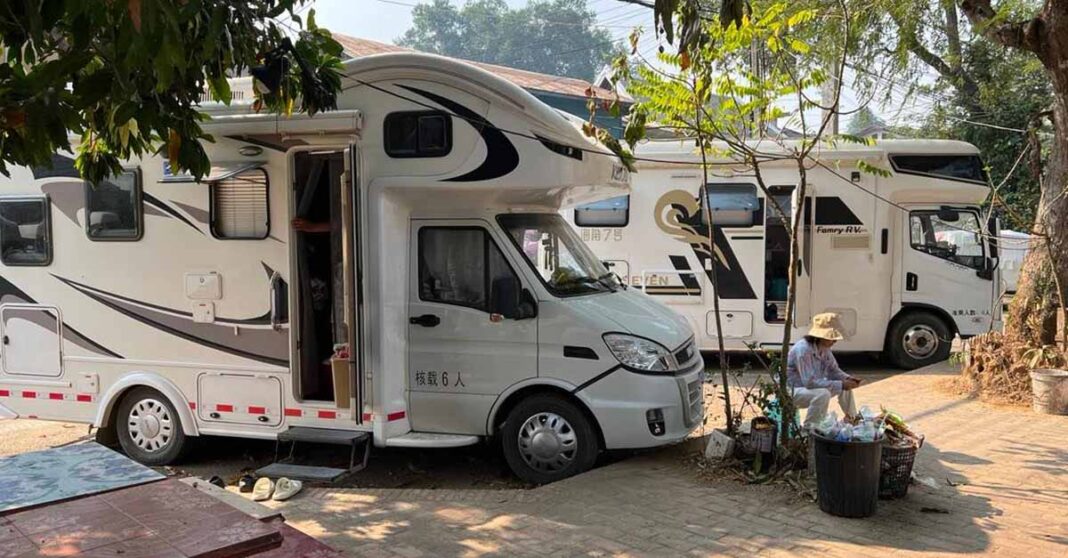The clean and quiet streets of Luang Prabang have seen a lot more activity in recent months, but local residents have begun expressing concerns about a growing number of motorhomes parked around the city.
While the odd motorhome is nothing unusual when spotted in a secluded nook of the popular tourist town, these have historically belonged to serious globetrotters making a pitstop amid a long journey around the world.
But with the recent reopening of borders between Laos and China, a new type of tourist has emerged in the streets of Luang Prabang – the camper.
Row upon row of camper vans and motorhomes, the majority of which originate in China, can be seen parked along major streets in Luang Prabang, taking up spaces normally used by local people and tour companies.
Occupants shower, cook, and eat in their vans, leaving residents wondering where excess waste might be dumped.
“We’re very pleased to see so many tourists back in our town. It’s great to see the city come back to life after Covid-19, but I am a bit worried about all these motorhomes,” says tourism consultant and local business owner, Tara Gujadhur.
“They are taking up a lot of public space and they don’t seem to make use of local businesses. They cook their own food and they sleep there, so there isn’t a lot going toward hotels or restaurants in our local economy,” she says.

The return of tourism to Luang Prabang following the Covid-19 pandemic has brought a new set of challenges. Fewer inward flights, rampant inflation, and bureaucratic interference with regional cultural events.
But international media has been filled with reports of the return of tourism to Luang Prabang, with recent articles from Nikkei and Time Magazine demonstrating the confidence expressed by tourism industry stakeholders.
Local residents and tour operators do remain optimistic, but some are more wary, concerned that the pendulum could just as easily swing the other way.
“I’m extremely happy to see that people of all nationalities are finally able to come back to experience and enjoy Laos. The Lao people welcome everyone with open arms, and it’s no different towards those who are visiting with their campervans,” says Matt Clancy, Country Manager for Easia Travel Laos.
“But it is starting to become a concern in the community that certain areas… may become overwhelmed and that the mass arrival of campervans may not provide the much-needed boost that the economy really needs,” he adds.
When the borders with Thailand first reopened, Thai tourists flocked to Luang Prabang, eager to travel yet not quite ready to venture too far. Train services to Luang Prabang quickly filled on Thai national holidays, and rows of minivans snaked along the streets delivering Thai tour groups to temples and other sites.
“We benefitted from the influx of Thai tourists quite a lot. But these guys in the camper vans, they’re just eating and sleeping in the vans. They aren’t really contributing to the local economy but they’re taking up a lot of space,” says a tour guide who asked to remain anonymous.
Tourism pundits have suggested that the campervans could be relocated to a specific area equipped with the necessary facilities.
Fees levied against the use of the area could help the government raise revenue, while the relocation of the vans would free up public space in other areas of the city.
“It seems like there is a missed opportunity for the city to earn income from the camper van tourists,” says Tara Gujadhur.
“They could easily be directed to a designated area on the outskirts of town where they have access to services like toilets, electricity, and laundry. At the very least they could be charged a fee for parking overnight.”



